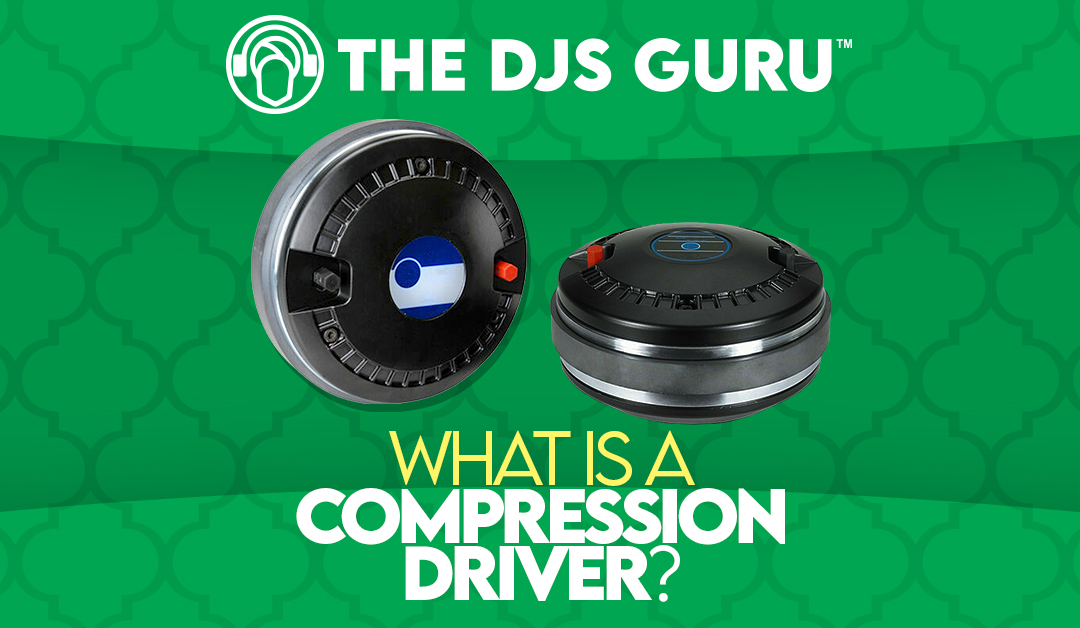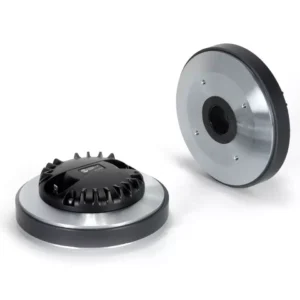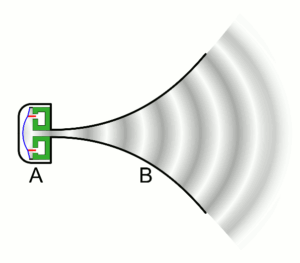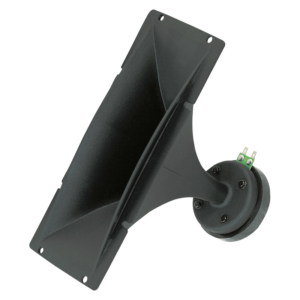Do you know what’s fun? Buying new audio gear. Do you know what’s less fun? Reading a bunch of technical jargon about speaker science (unless you’re nerds like us). But hear us out! There are a few important parts of speaker design that even the average DJ needs to know about, and here at The DJs Guru we are going to break it down in an easy-to-understand format so you can make sure you’ve got the right set of speakers for every job. We’ve already taken a look at the difference between watts and dB. Today, we’re going to answer a question you may not have asked yourself – what is a compression driver?
So, what is a compression driver?
Let’s talk for a minute about how a speaker works. At its core, a basic loudspeaker works by delivering a fluctuating electrical signal to a voice coil (a wrapping of wire) attached to a driver, causing the driver to move in and out and create pressure waves that we as humans perceive as sound. For subwoofers and many full-range speakers we see every day, the speaker driver is a cylindrical cone (usually made of some sort of paper pulp).
When it comes to PA speakers, however, there is another type of driver that is often utilized. Take a look at your PA speakers – see the flared horn at the top? At the back of that horn is the “tweeter,” and it’s a compression driver. In essence, it is a small but strong diaphragm that projects its sound through a small opening at the back of the horn, thereby creating much higher sound pressure levels and thus louder volumes. The horn itself serves to amplify and spread the sound across the listening area. For live sound applications, where music needs to fill large spaces, compression drivers and horns are essential for adequate sound coverage.
Want more? Your concierge awaits, let us help guide you today!
Why does that matter?
One word – decibels. Quality compression drivers allow PA speakers to get loud. Not only can bigger and higher quality compression drivers get louder, but they will sound better when you push them to their limits. If you find yourself mostly doing smaller, indoor events you may not have ever even considered your speaker’s compression driver.
However, once you move into larger rooms or outdoor venues you can immediately start to hear the difference. Smaller compression drivers struggle to put out loud, clear audio when the volume greats cranked to 10. Sure, there is some sound coming out, but it’s probably not pleasant on the ears. As DJs, we need to always be aware of the limits of our gear. Sure, we all know to consider how many dB our speaker can output or how low our subwoofers can go (don’t bring those 12″ subs to EDM night at the local college). But it’s also worth pausing to consider if we are taking enough “oomph” to our gigs in the tweeter range as well.
Want more? Your concierge awaits, let us help guide you today!
Give me an example
Let’s take a look at a couple of common and readily-available speakers, the RCF ART 912-A and ART 932-A. On the surface, these speakers look identical. Even most of their specs look similar. However, there is one key difference. While the more affordable ART 912-A is sporting a respectable 1.75″ compression driver, the 932-A is equipped with a 3″ version. Not only is this driver bigger, but it’s made of an upgraded titanium/neodymium combo that offers improved resistance to the incredible heat and vibration that tweeters undergo.
So do you need to fork over the additional cash for the larger compression driver? Well, ask yourself a couple of questions. Are most of your events indoors? Do your crowd sizes normally sit around 150 people or less? Do you normally supplement your sound system with multiple sets of speakers? A smaller compression driver may be all you need, allowing you to save money for other equipment purchases. Are you someone whose company is growing quickly? Do you see your gear set up at school dances and large hotel ballrooms more often than at the local wedding hall? Do you regularly schedule outdoor events? Ponying up the extra cash for a larger compression driver may be the smart choice in your case.
Want more? Your concierge awaits, let us help guide you today!
What is a compression driver – summary
If you’re looking for the TL;DR, here’s the scoop. A compression driver is a specialized speaker driver that’s paired to the back of a horn in professional loudspeakers. By forcing pressurized air through a small opening in the back of the horn, it is able to create much higher sound pressure levels than the typical tweeter you’d see on a home stereo. In general, the larger the compression driver, the louder and clearer the sound at high volumes. If you’re a DJ who finds themselves outdoors, in large indoor spaces, or in front of crowds of hundreds of people, it’s worth taking a look at compression driver size when comparing different speaker models. As always, we are big fans of making sure that DJs have the right tools for every event – knowing what a compression driver is and how it works goes a long way to choosing the perfect gear for your company.





